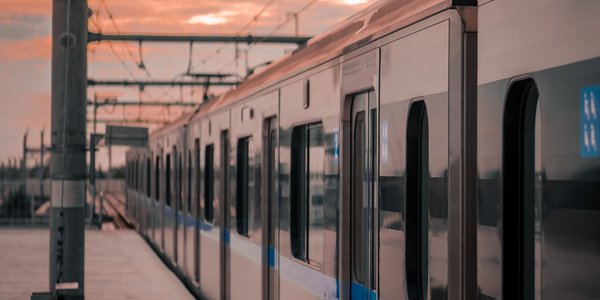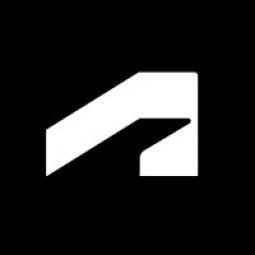Technology Category
- Analytics & Modeling - Virtual & Augmented Reality Software
- Wearables - Virtual Reality Glasses, Headsets & Controllers
Applicable Industries
- Construction & Infrastructure
- Railway & Metro
Applicable Functions
- Maintenance
- Product Research & Development
Use Cases
- Construction Management
- Virtual Reality
Services
- System Integration
- Training
About The Customer
Norconsult is the largest multidisciplinary technical consultancy in Norway, with roots dating back to 1929. It applies its expertise to the design and construction of various infrastructure projects, including airports, public event arenas, oil fields, highways, hospitals, dams, bridges, railways, and tunnels. Based in Sandvika, near Norway’s capital city Oslo, Norconsult has nearly 3,300 employees across 88 global offices. Despite its large size, Norconsult cultivates the spirit of a startup through an internal team called the 'Bleeding Edge', which pushes the development of technology to make work practices more efficient and offer clients a better product.
The Challenge
Norconsult, a large multidisciplinary technical consultancy in Norway, was tasked with designing a new rail tunnel near Bergen, Norway. The project was to build a second Ulriken Tunnel parallel to the existing one to double capacity. The challenge was to create a new tunnel without disturbing the old one or disrupting rail service. The project also faced administrative hurdles, particularly getting regulatory approval of the sign and signaling system, which is paramount for railway safety. The signals are typically installed years before train operators can test them, making errors common. The project was scheduled for completion in 2022 and presented significant challenges for builders, who had to bore a new tunnel through Mount Ulriken while also upgrading the existing tunnel and associated rail stations—all without disrupting current railway traffic.
The Solution
To tackle the project’s complex design and construction challenges, Norconsult used Building Information Modeling (BIM) to coordinate across disciplines more efficiently. To address the administrative challenges around the signaling system, Norconsult conceived the idea of marrying the BIM models with virtual reality to create a game environment. This allowed train operators to 'drive' on the future tracks before they were built. The team animated the 3D models with 3ds Max and augmented them with laser scans of real-world data, such as the layout of the train cockpit, using ReCap. Within the game experience, train operators drove on the virtual train tracks under the supervision of civil engineers, who used their performance to evaluate the placement of signs and signals. Through an iterative design process, the engineers refined and optimized the signaling system.
Operational Impact
Quantitative Benefit

Case Study missing?
Start adding your own!
Register with your work email and create a new case study profile for your business.
Related Case Studies.

Case Study
IoT System for Tunnel Construction
The Zenitaka Corporation ('Zenitaka') has two major business areas: its architectural business focuses on structures such as government buildings, office buildings, and commercial facilities, while its civil engineering business is targeted at structures such as tunnels, bridges and dams. Within these areas, there presented two issues that have always persisted in regard to the construction of mountain tunnels. These issues are 'improving safety" and "reducing energy consumption". Mountain tunnels construction requires a massive amount of electricity. This is because there are many kinds of electrical equipment being used day and night, including construction machinery, construction lighting, and ventilating fan. Despite this, the amount of power consumption is generally not tightly managed. In many cases, the exact amount of power consumption is only ascertained when the bill from the power company becomes available. Sometimes, corporations install demand-monitoring equipment to help curb the maximum power demanded. However, even in these cases, the devices only allow the total volume of power consumption to be ascertained, or they may issue warnings to prevent the contracted volume of power from being exceeded. In order to tackle the issue of reducing power consumption, it was first necessary to obtain an accurate breakdown of how much power was being used in each particular area. In other words, we needed to be able to visualize the amount of power being consumed. Safety, was also not being managed very rigorously. Even now, tunnel construction sites often use a 'name label' system for managing entry into the work site. Specifically, red labels with white reverse sides that bear the workers' names on both sides are displayed at the tunnel work site entrance. The workers themselves then flip the name label to the appropriate side when entering or exiting from the work site to indicate whether or not they are working inside the tunnel at any given time. If a worker forgets to flip his or her name label when entering or exiting from the tunnel, management cannot be performed effectively. In order to tackle the challenges mentioned above, Zenitaka decided to build a system that could improve the safety of tunnel construction as well as reduce the amount of power consumed. In other words, this new system would facilitate a clear picture of which workers were working in each location at the mountain tunnel construction site, as well as which processes were being carried out at those respective locations at any given time. The system would maintain the safety of all workers while also carefully controlling the electrical equipment to reduce unnecessary power consumption. Having decided on the concept, our next concern was whether there existed any kind of robust hardware that would not break down at the construction work site, that could move freely in response to changes in the working environment, and that could accurately detect workers and vehicles using radio frequency identification (RFID). Given that this system would involve many components that were new to Zenitaka, we decided to enlist the cooperation of E.I.Sol Co., Ltd. ('E.I.Sol') as our joint development partner, as they had provided us with a highly practical proposal.

Case Study
Splunk Partnership Ties Together Big Data & IoT Services
Splunk was faced with the need to meet emerging customer demands for interfacing IoT projects to its suite of services. The company required an IoT partner that would be able to easily and quickly integrate with its Splunk Enterprise platform, rather than allocating development resources and time to building out an IoT interface and application platform.

Case Study
Bridge monitoring in Hamburg Port
Kattwyk Bridge is used for both rail and road transport, and it has played an important role in the Port of Hamburg since 1973. However, the increasing pressure from traffic requires a monitoring solution. The goal of the project is to assess in real-time the bridge's status and dynamic responses to traffic and lift processes.

Case Study
Building Smart IoT-Connected Railways
• Difficult environment. Communications equipment on trains must function properly in harsh conditions, such as environment temperatures ranging from -25°C to +85°C, according to the EU standard EN50155.• Railway regulations. All products in a train must adhere to strict standards, relating to working vibration, power consumption, and lifetime.• Lengthy process. Time to market in the railway industry can take years from concept to mass production, so product design requires a solid long term vision.

Case Study
Bellas Landscaping
Leading landscaping firm serving central Illinois streamlines operations with Samsara’s real-time fleet tracking solution: • 30+ vehicle fleet includes International Terrastar dump trucks and flatbeds, medium- and light-duty pickups from Ford and Chevrolet. Winter fleet includes of snow plows and salters.




